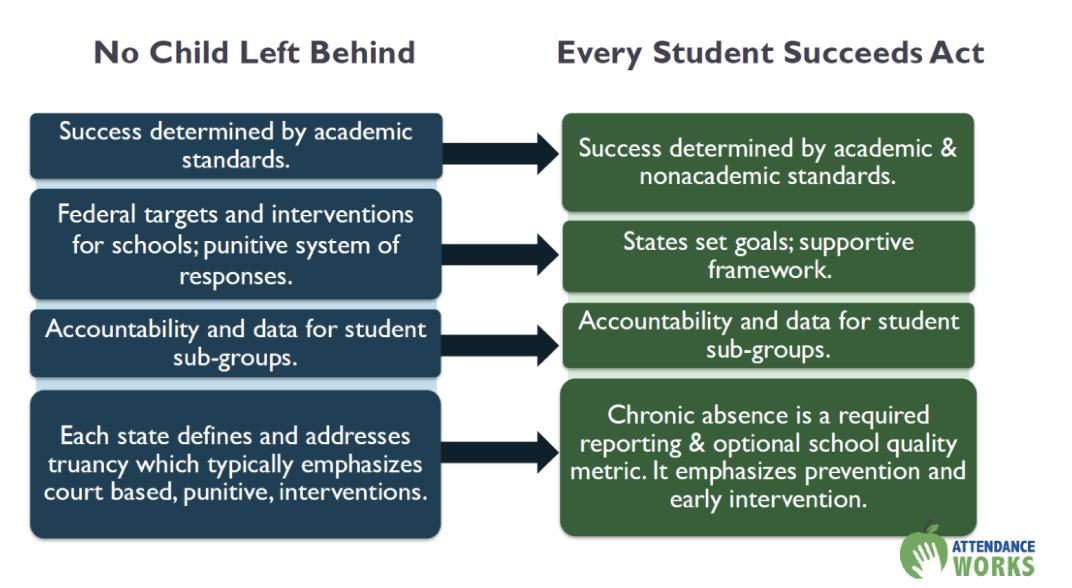On June 13th and 14th, Attendance Works participated in the 2017 Campaign for Grade-Level Reading Funder Huddle in Denver. The Huddle brought together over 200+ executives and program officers from family and community foundations, United Ways and corporate giving programs, and provided an invaluable opportunity for funders to exchange ideas about how to address chronic absence as part of a comprehensive strategy for ensuring young children ready by the third grade. As the mini-plenary closing speaker on June 14th, Hedy Chang, Attendance Works' Executive Director, shared how this is a watershed moment during which states and communities have the opportunity to leverage the changes in federal law to address chronic absence.
The mini-plenary, Chronic Absence as a Policy-Worthy Lever for Change, offered an especially robust forum for sharing ideas. The speakers focused on the many states working to comply with the Every Student Succeeds Act (ESSA) are adopting chronic absence as an indicator of school quality or student success. The ESSA requires states to measure school quality and improves on the No Child Left Behind Act by allowing states and districts to round out their accountability rubrics with measures beyond test scores. In addition to meeting ESSA accountability requirements, the inclusion of chronic absence in state accountability rubrics also provides real opportunities for states, districts and philanthropists to achieve the goals of the Campaign for Grade-Level Reading, to increase the number of children from low-income families reading proficiently at the end of third grade. As this chart shows, 14 out of the 17 officially submitted ESSA plans includes chronic absence.
A key theme was the value of using data to show the impact of chronic absence on student achievement. Speakers also showed how data can help schools and communities to notice and take action when students are missing so much school they are academically at risk.
This timely discussion featured Candice McQueen, Education Commissioner for Tennessee, Carey Wright, State Superintendent for Mississippi Department of Education, Candice McQueen, Education Commissioner for Tennessee, Charlene Russell-Tucker, Chief Operating Officer for the Connecticut State Department of Education and Tom Boasberg, Superintendent of Denver Public Schools.


Equally important, the forum created an opportunity for Attendance Works to showcase the role that philanthropy can play in reducing chronic absence by honoring Jim Williamson, President of the Community Foundation of Greater New Britain. Jim’s commitment and passion for children has had a catalytic influence and played a critical role in launching and sustaining the New Britain, Campaign for Grade Level Reading.
In particular, Jim’s leadership led New Britain educators to use data to realize they had a problem with chronic absence, and encouraged them bring together key stakeholders to identify and implement solutions. The resulting practices and dramatic reductions in chronic absence in New Britain have had ripple effects across Connecticut and ultimately the nation. “Connecticut is the first state in the nation to show consistent reductions in chronic absence for three years in a row,” Hedy said. “Jim Williamson serves as an inspiring example of how philanthropy, especially a local community foundation can have an enduring impact on improving outcomes for children.”
As the mini-plenary closing speaker, Hedy shared how today is in a watershed moment during which states and communities have the opportunity to leverage the changes accompanying the shift from No Child Left Behind to ESSA. In particular, the changes in the education law can support using chronic absence as a diagnostic tool for identifying and addressing barriers to learning and helping to target the use of community resources. “The key is ensuring policy makers and schools take a supportive rather than punitive framework,” Hedy told participants.
Hedy offered a number of recommendations to funders including:
- Find out if chronic absence is in your state's ESSA plan or state reports
- Promote use of chronic absence as a diagnostic tool for identifying and addressing barriers to learning, especially for vulnerable students
- Convene stakeholders to review data and develop solutions
- Identify key grantees who can advance the issue in your community and state
- Build public awareness, understanding and a sense of urgency for reducing chronic absence
- Encourage local superintendents to sign up for the Attendance Awareness Month Call to Action and play a leadership role
Especially prepared for the GLR Campaign, this brief Leveraging ESSA’s New Accountability Requirements for Chronic Absence: Investment Recommendations for Philanthropy offers additional insights and ideas.
